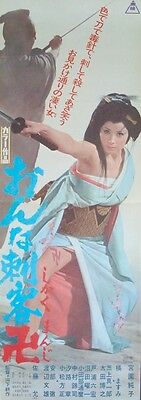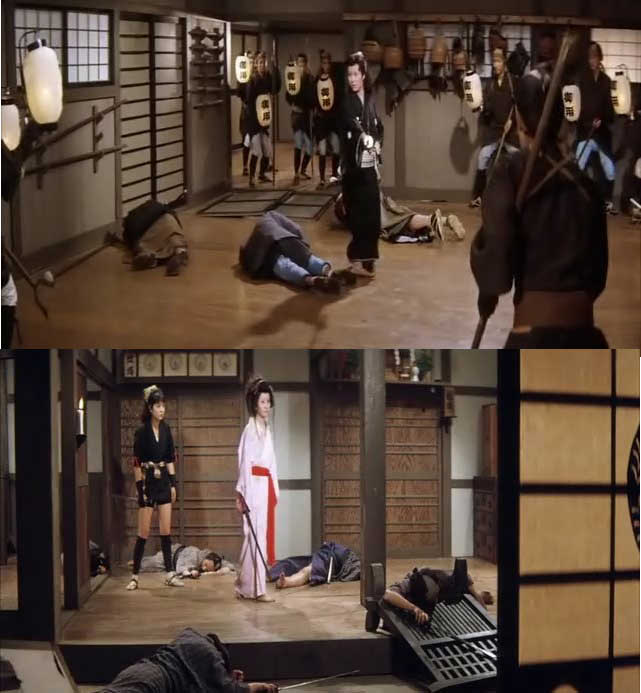The Legends of the Poisonous
Seductress Trilogy
Ohyaku: The Female Demon (1968) – 7.0
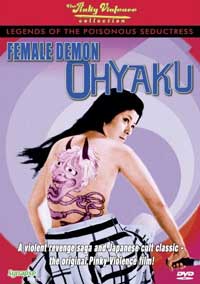
This is the first film in a trilogy that
is called - at least in the English DVD set - Legends of the Poisonous Seductress.
The films are joined more by theme than plot as the same actress, Junko Miyazono,
plays a different character in all three films. The theme is revenge carried
out by a female. The Japan film industry was on the verge of a period of
producing films that were much more violent, perverse and sexual. This film
crawls right up to the cesspool and peers in, but remains at a distance.
Barely. It gets a little bumpier as it progresses till the final hanging
by the hair/Guillotine scene crawls right up your leg. On one hand these
are clearly exploitation films with a large chunk of misogyny served up -
while at the same time allowing the woman to liberate themselves from the
male patriarchy in the only way they can - by killing all of them.
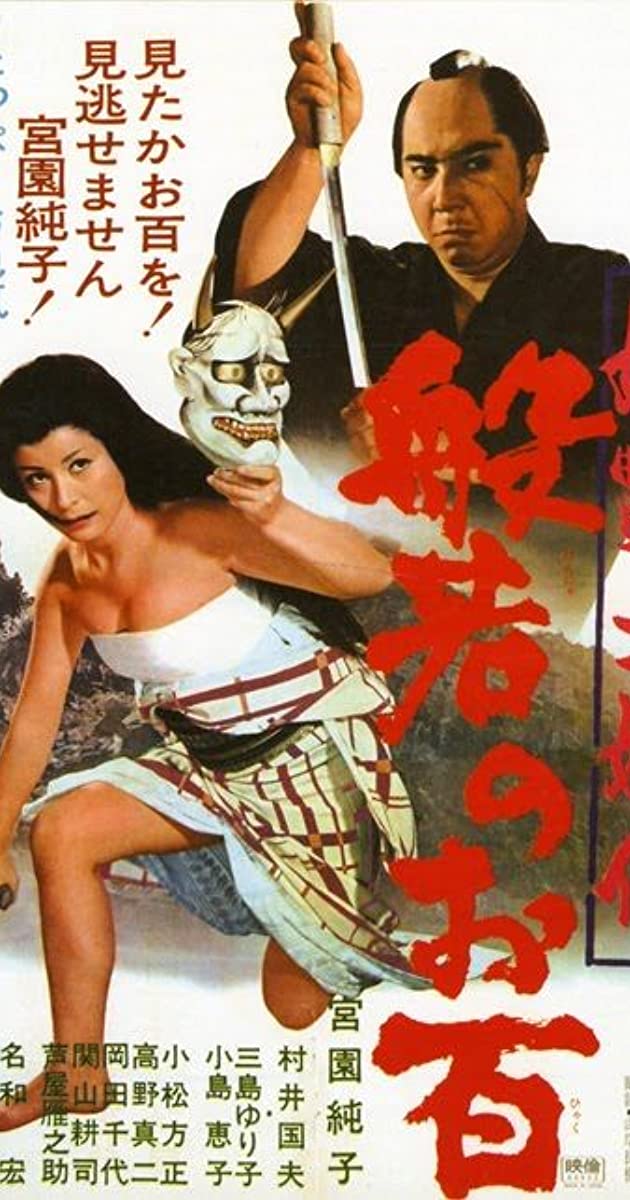
Ohyaku was born unlucky - born to a prostitute
who decides to kill herself by jumping off a bridge with her baby in her
arms. The baby survives with a scar on her back that is both physical and
psychological. Later she gains work in a circus showing great skill at tight
rope walking as well as whip and darts. This comes in handy. When she and
her lover are betrayed and she is sent to prison, she vows revenge.
There is clearly a hint of Female Prisoner
Scorpion here and the female revenge motif was to be taken up by other films
such as Lady Snowblood, The Crimson Bat films, The Red Peony Gambler series
and Wives of the Yakuza. All terrific films. By the end of this film you
wish that the character of Ohyaku continued in further films.
Quick-Draw Okatsu (1969) - 7.5
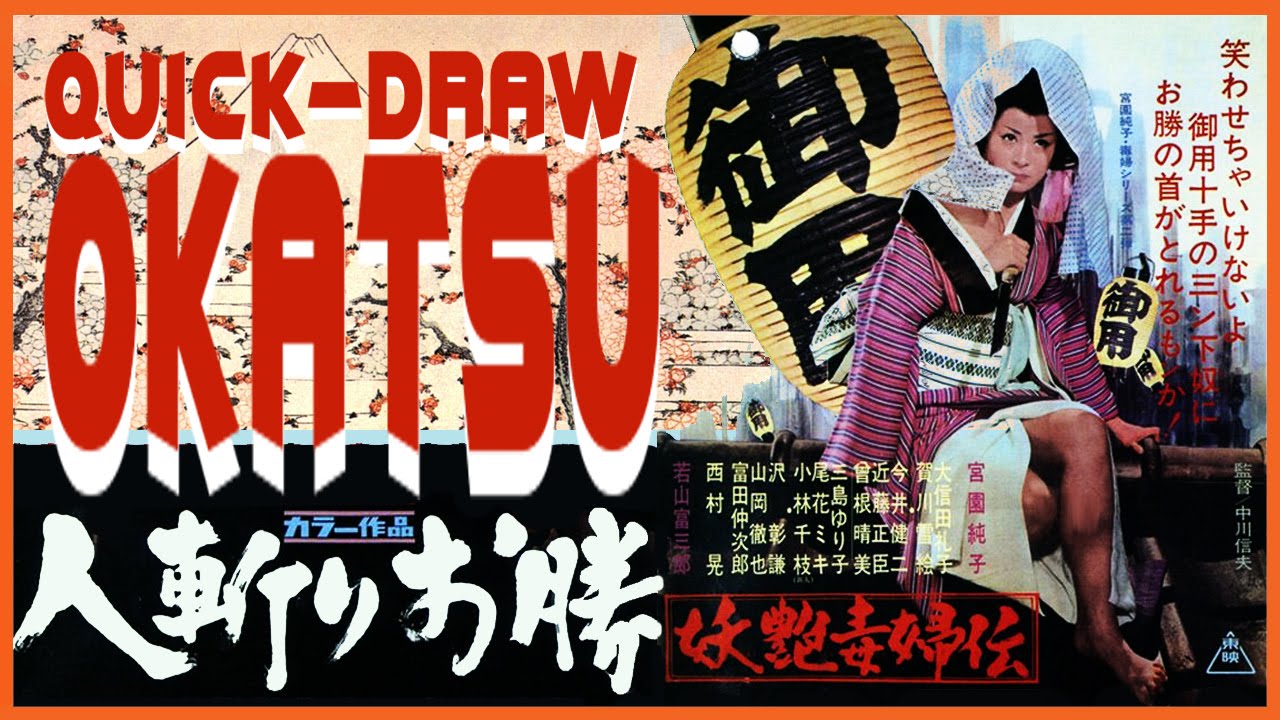
This is the second film in what is called
Toei’s Legend of the Poisonous Seductress trilogy. It is a trilogy of unconnected
period films other than the lead actress (Junko Miyazono) is in all three
of them and a theme of unrelenting bloody vengeance is present. In the first
film, Female Demon: Ohyaku (1968), the female character Ohyaku and her lover
are betrayed and she goes through hell to bring justice at the edge of a
sword. In this film and in the following one, her name is Okatsu but again
they are not the same character. Other themes run through all three films
as well - oppression of the peasants, incredible cruelty displayed by the
rulers and a society where women are sexually exploited and badly treated.
There is plenty of action, a body count that Zatoichi would be proud of and
it gets quite rough and graphic with one torture scene that made me wince.
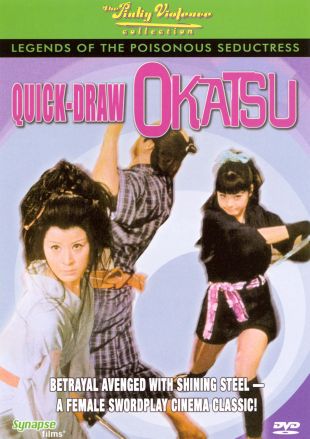
In a sense though this willingness to put
that type of violence on the screen was a sign of where Japanese film was
headed but also a reminder from where it came in only a decade. That is because
the director is Nobuo Nakagawa, the man who is generally given the title
as the Godfather of Japanese Horror. But his classic horror films such as
Black Cat Mansion, The Woman Vampire and The Ghost of Yotsuya were all atmosphere
with very little gruesome violence. Nobuo seems to have been able to adjust
to the changing taste of audiences - but in fact he basically stopped directing
within a year of this film.
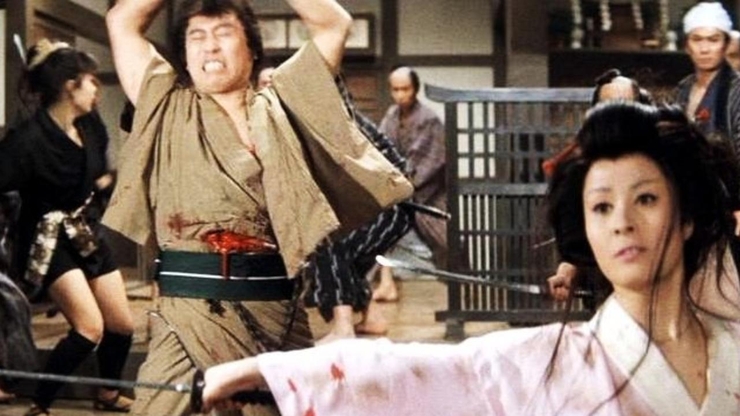
It is tax collecting time in some backwater
province in Japan and that is always a bad time of the year for the farmers
- if they don't have enough rice to pay or try and hide it they are cut down
without impunity. One young woman Rui (Reiko Oshida - who was later to appear
in a few of the female delinquent films) - helps an old lady escape into
the confines of a dojo run by the Makabe family - the father ( Kô Nishimura,
an actor you will see a lot of in Japanese films), the son and the daughter
Okatsu. They are given protection from the County Commissioner, the rapacious
Shiozaki (Kenji Imai - with a face that made him a perennial bad guy). The
son though has no desire to carry on the family tradition and has got himself
hooked up with a pregnant waitress. He gets suckered into a dishonest game
and first Okatsu and then the father have to stand in for the son who has
skedaddled as fast as he could.
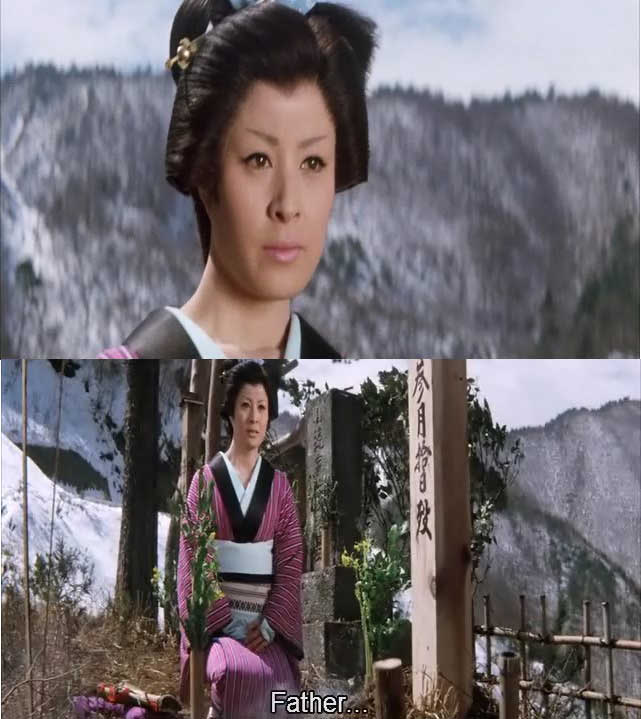
This is the cultural part of the film that
threw me a bit - the high value placed on the first son to the point where
others in the family are willing to sacrifice themselves for a guy who is
a weakling, damaged the family name and runs away - and their willingness
to sacrifice themselves so passively. It doesn't end well and after Okatsu
escapes after being beaten and raped, she swears revenge. Because she is
an incredible swordswoman - so why didn't she use those skills before you
might wonder. A Western film would never have a character just stand there
allowing themselves to be brutalized and degraded in order to allow the son
to survive. It is a type of honor we don't really understand.
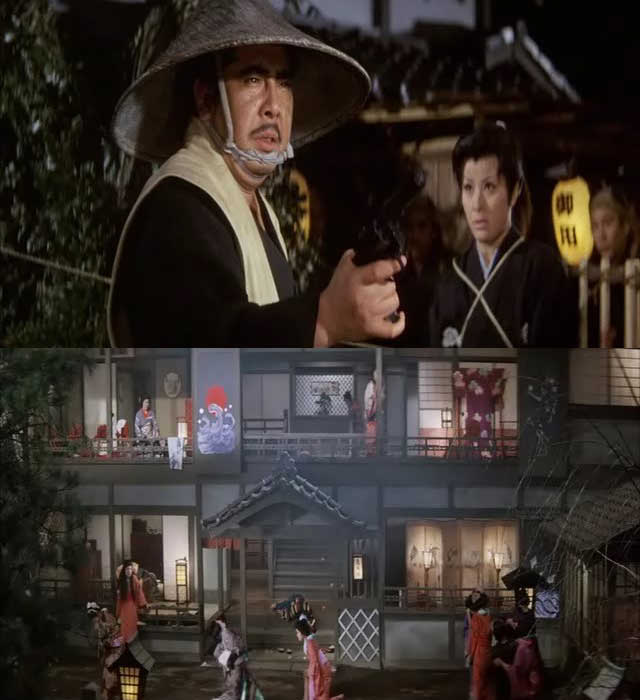
From this point on though Okatsu turns
into a killing machine as she tracks Shiozake to Edo and leaves a long trail
of dead behind her (with some assistance from Rui who turns out to be more
than she first appeared). There are some very stylish scenes - in one quick
scene Okatsu has been drugged and sold to a brothel and she is able to find
a small blade and in one slashing movement cuts the throats of three men.
In that same brothel, Nobuo pulls the camera far back so that the entire
brothel can be seen with the two floors and rooms and watching all the action
from afar is a great look. Unfortunately, as I think I wrote in a review
of the first film, there were no further films of this character - it would
have made a great series and the actress Junko Miyazono is one tough cookie.
As in the first film there is a solid cameo from Tomisaburô Wakayama
of Lone Wolf and Cub fame. He is always welcome by me.
Okatsu the Fugitive (1969) - 7.5
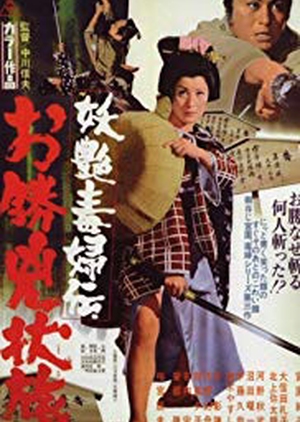
So many of the pulp samurai films from
the 1960's end in massive bloodshed. Generally one lone swordsperson up against
a multitude of fighters and no matter how many I have seen of them - pretty
much every Zatoichi films but others as well - I find them very enjoyable
- cathartic as I assume the audiences must have felt back then. But this
one was a real doozy - very high up there on the satisfaction scale - beautifully
staged and choreographed with a heroic bombastic soundtrack that accentuated
each kill, each flash of the sword. Not that there weren't some excellent
action scenes previously but they all led like small streams to this one.

This is the third film in what is called
the Toei’s Legend of the Poisonous Seductress trilogy and though Okatsu is
again a different character, this one is very much an echo of the previous
one. Okatsu even has the same family name of Makabe and her family is again
tortured and murdered by corrupt officials. And she again is raped. Vengeance
comes fast and hard in these Japanese films - no self-doubts, no reflection
- you promise your parents that they will be avenged and you go about the
business of doing just that. Of course, it helps if you are a master swordswoman.
It also usually takes about 90-minutes to do it - so some subplots get thrown
in as well.

Junko Miyazono who plays Okatsu isn't as
lovely as Meiko Kaji was in Lady Snowblood or as graceful as Junko Fuji in
the Red Peony Gambler films but she is fine in these roles as a relentless
killer whose world has been turned upside down by circumstances outside of
her control. In this one she is an obedient daughter ready to get married
in a week when everything goes to hell - by the end of the film as she walks
down a dirt road to nowhere (a theme song playing of course) - as she did
in the last film and as Zatoichi does in every film. She is no longer that
sweet innocent woman - she has killed and killed often and had her virtue
taken away. Her life is now on the open road. There is no going back to normalcy.
Nobuo Nakagawa again directs with style.



